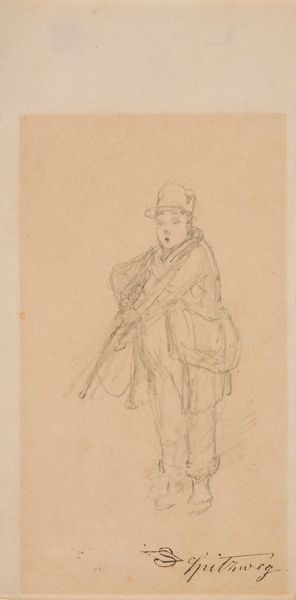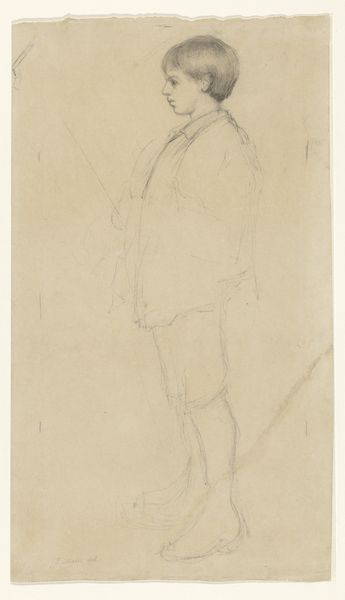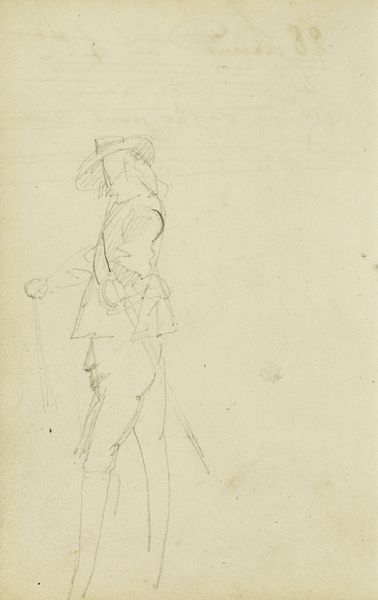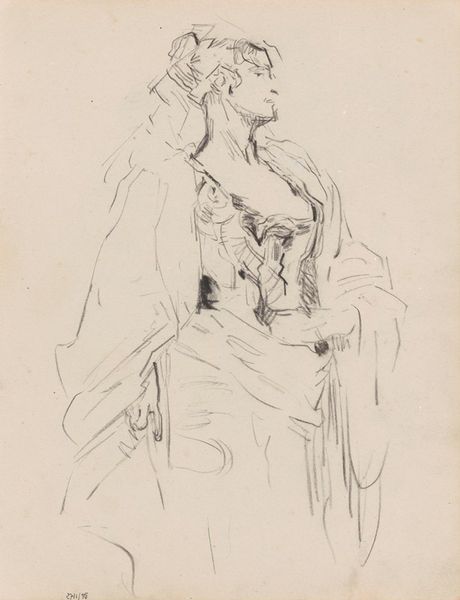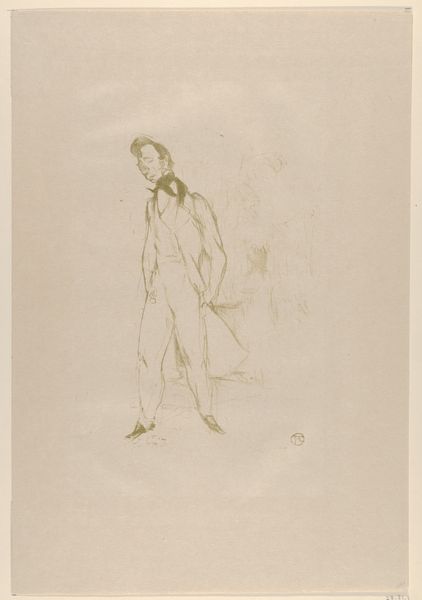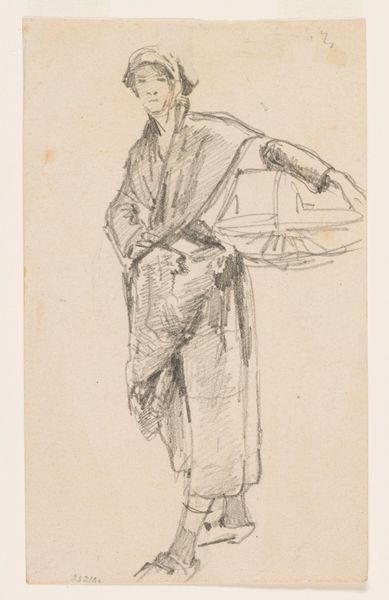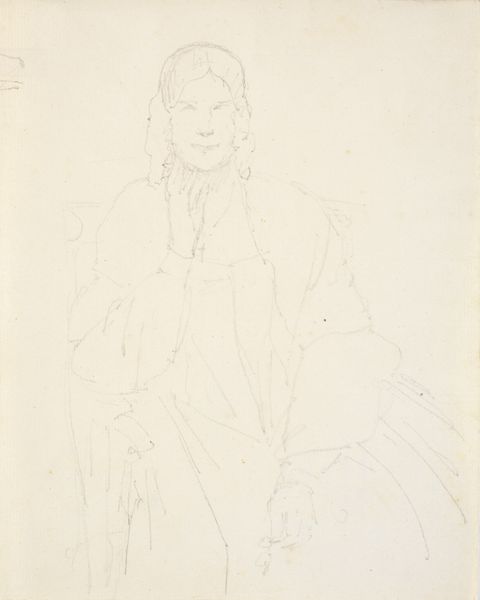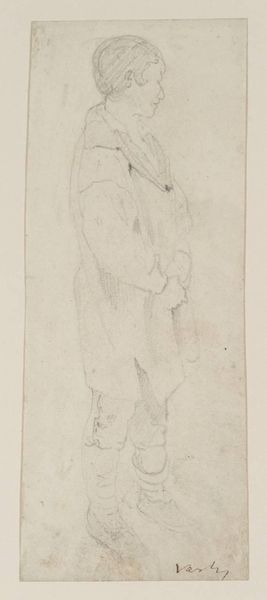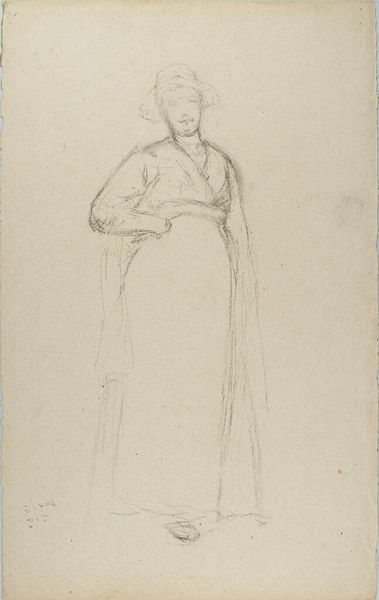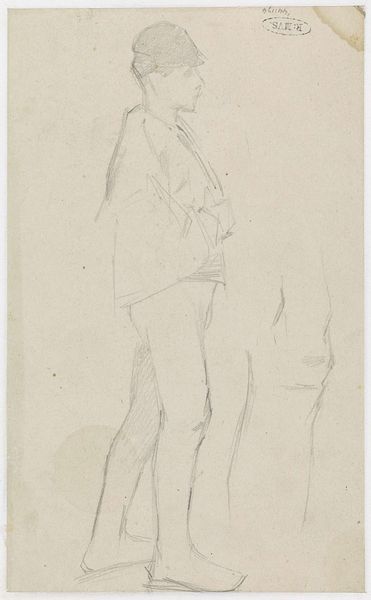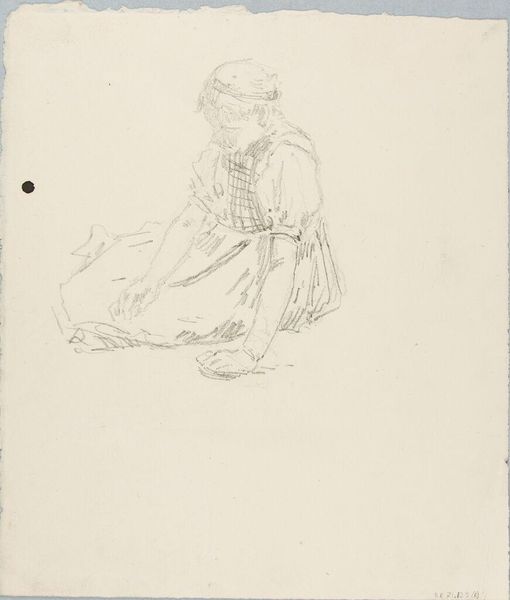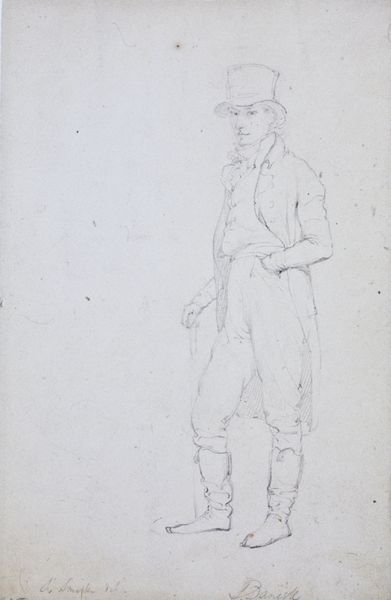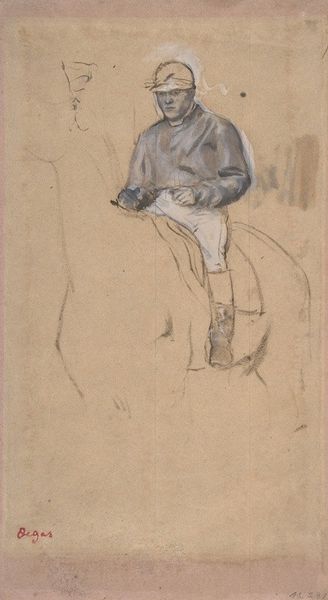
Copyright: Public Domain: Artvee
Editor: Here we have Paul Cézanne's "Femme à la mante," a watercolor and pencil drawing from around 1890-1895. It’s quite delicate, almost ghostly, with minimal color. I'm curious – what stands out to you about this work? Curator: What immediately captures my attention is how Cézanne, even in what appears to be a simple study, engages with the complex representation of women within the art world of his time. Do you see how the figure seems both present and somehow shielded? Editor: Yes, her clothing and hat seem to conceal more than they reveal. Curator: Exactly! Considering the period, it is likely that the sitter came from a privileged social sphere. This prompts me to think about the societal pressures and constraints imposed on women, and how Cézanne is either consciously or unconsciously alluding to that experience. Note the restrained color palette; how might that relate to his perception of gender? Editor: I hadn’t considered it in that way. It's interesting how the lack of detail creates a sense of anonymity, as if she is a type rather than an individual. It seems that his choice of watercolor allows the figure to emerge gently from the blank page. Curator: And the social function of images? What purpose would an image like this one serve? How did that public role play into Cézanne’s artistic process? Perhaps, as it feels somewhat unfinished, it served as a way of grappling with societal expectations, and exploring a public versus private view of a woman’s status at this moment in time. Editor: It's fascinating to see how even an unfinished portrait sketch can reveal so much about the social and political landscape of the time. Curator: Indeed! The art is never made in a vacuum; the artist is responding to his contemporary surroundings. The politics of imagery are something to always consider. It's pushed me to look closer at Cézanne, thinking more critically about the nuances in his presentation of women. Editor: I’ll definitely look at the representation of women of that time in art a bit differently from now on. Thank you.
Comments
No comments
Be the first to comment and join the conversation on the ultimate creative platform.
